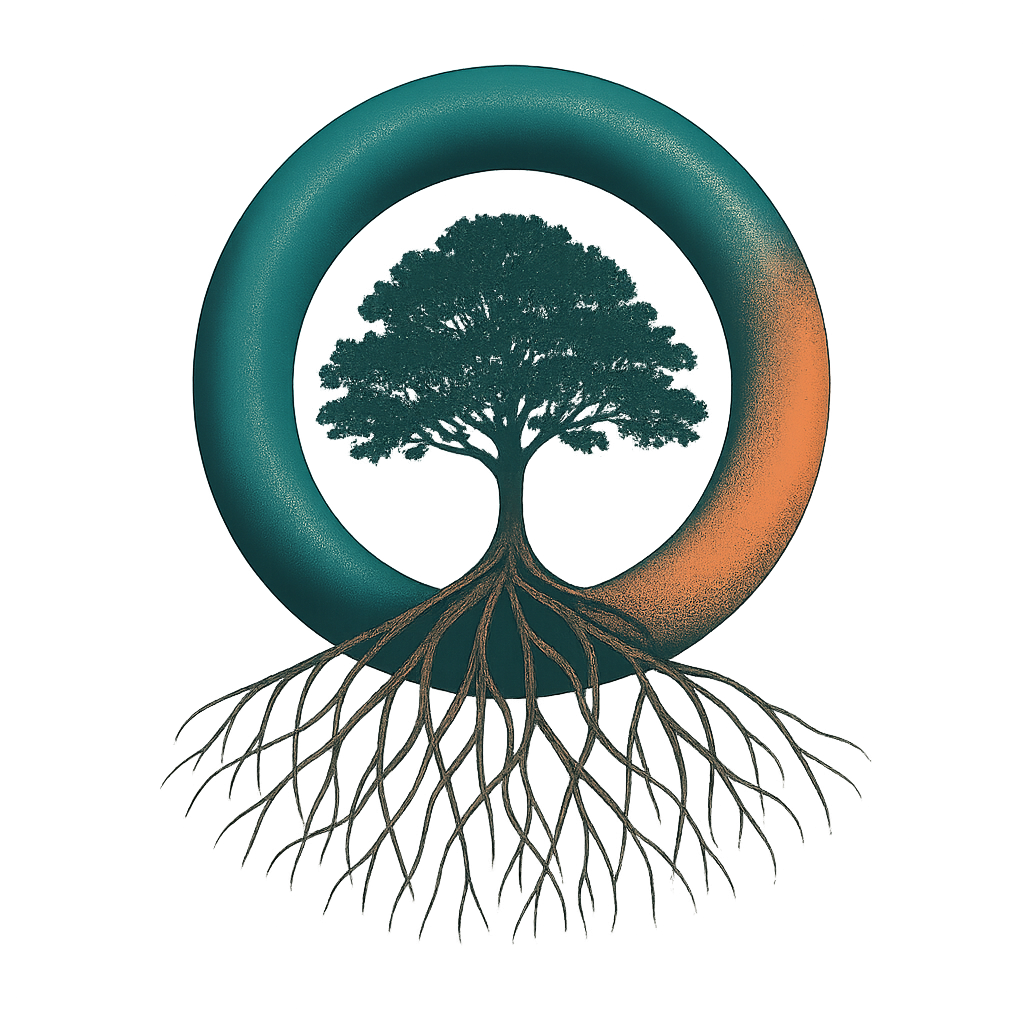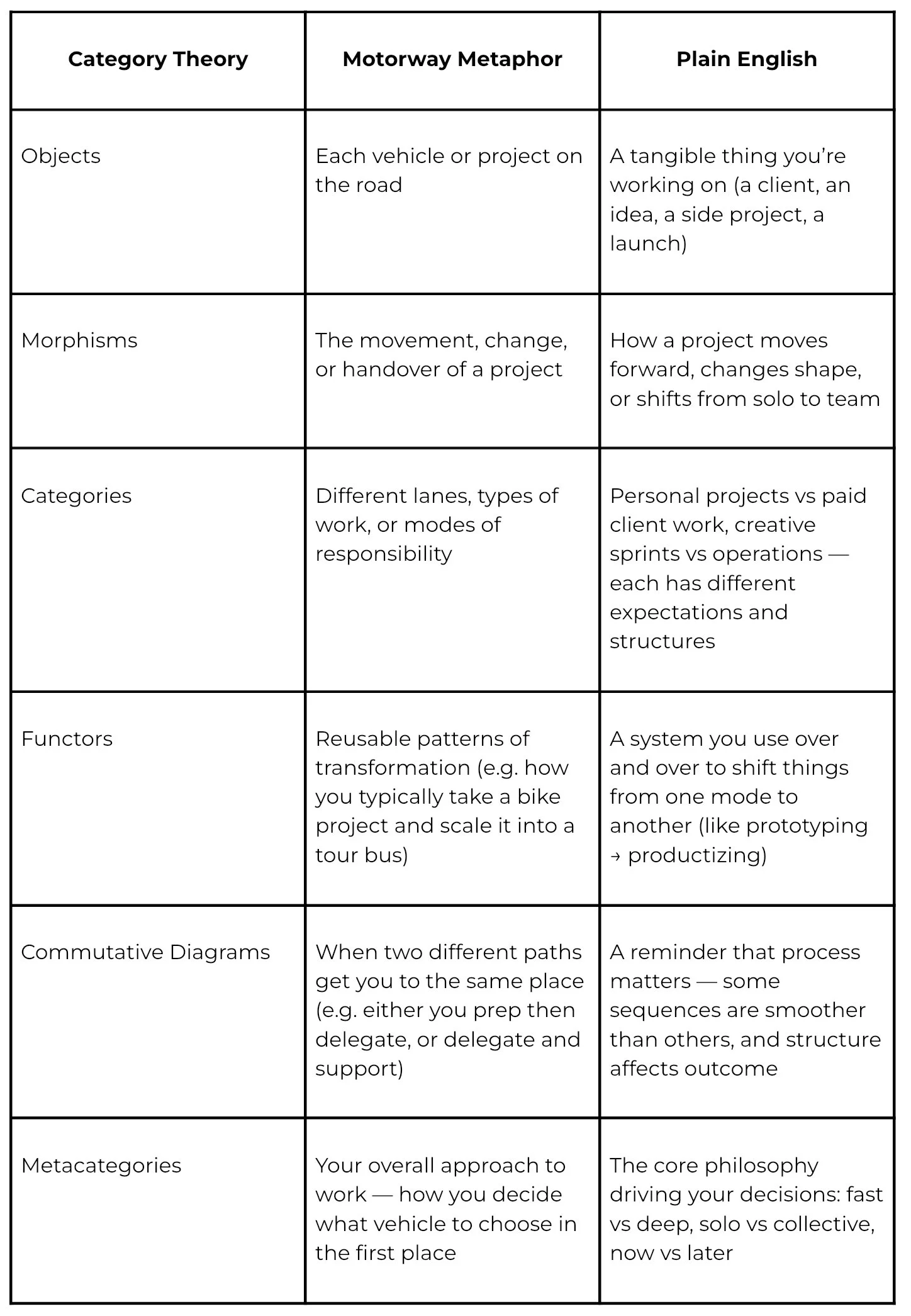The Motorway Method x Category Theory
Why this metaphor works mathematically, cognitively, and systemically
The Motorway Method might seem like a playful metaphor — a way to visualise your projects and pace. But underneath, it mirrors some surprisingly deep mathematical ideas from Category Theory, the same framework we use throughout Mangrove to track coherence, relationships, and transformation.
At its heart, Category Theory isn’t about numbers — it’s about how things relate.
It’s a way of asking:
What’s the structure of this system?
How do its parts transform over time or through interaction?
What’s preserved across those changes?
The Motorway Method taps directly into this kind of relational thinking — just with traffic instead of topology.
In Category Theory Terms
Here’s how the Motorway Method maps to core category theory concepts:
Why This Is So Adaptable
The Motorway Method is a relational system, not a fixed one. That’s what makes it so powerful:
One person can use it in a hundred different ways, depending on how they map meaning to vehicles, scale, or speed.
It can be used in:
One-to-one coaching for decision-making or burnout triage
Group workshops to map team dynamics or timelines
Personal reflection to explore cycles, frustration, or readiness
Because it focuses on relationships and transformations, not fixed categories or labels, it:
Works across scales — from a 20-minute task to a 2-year project
Encourages self-awareness — not just what you’re doing, but how it’s moving, who it’s involving, and why
Enables flexible rebalancing — adding/removing vehicles, switching lanes, pausing for fuel
Why It Fits Mangrove’s Ethos
Mangrove is built on the belief that systems should be:
Human-centered, not tool-centered
Relational, not rigid
Fractal, meaning patterns reappear at every level
Capable of transformation, not locked into defaults
The Motorway Method is one of the simplest ways to make that real:
It’s intuitive but deep — something you can sketch on a napkin, or model with AI agents
It respects your energy, pace, and role
It lets you notice bottlenecks, feel when you’re in the wrong lane, and shift without shame
It’s not about getting more done — it’s about understanding how things are moving and why you feel what you feel.
And Because It’s Categorical…
You can use the same structure to:
Map relationships between projects
Understand what’s upstream or downstream in your life or team
Notice how you tend to move across categories (e.g. always starting solo, then needing co-pilots when scale hits)
It also gives us an easy way to build tooling:
A GPT agent could track your vehicles, morphisms, functors, and role over time
You could use this to forecast burnout, spot delegation opportunities, or design seasons
TL;DR: Why It Works
Objects = Vehicles: Every project is a vehicle on the motorway
Morphisms = Motion: How projects shift, grow, stall, or merge
Categories = Domains: Different lanes or modes of work
Functors = Patterns: How you repeat certain shifts (e.g. bike → car)
Metacategories = Mindset: How you decide what journeys are worth making
Why it matters: It helps people see their systems, feel their way through change, and design from clarity.

